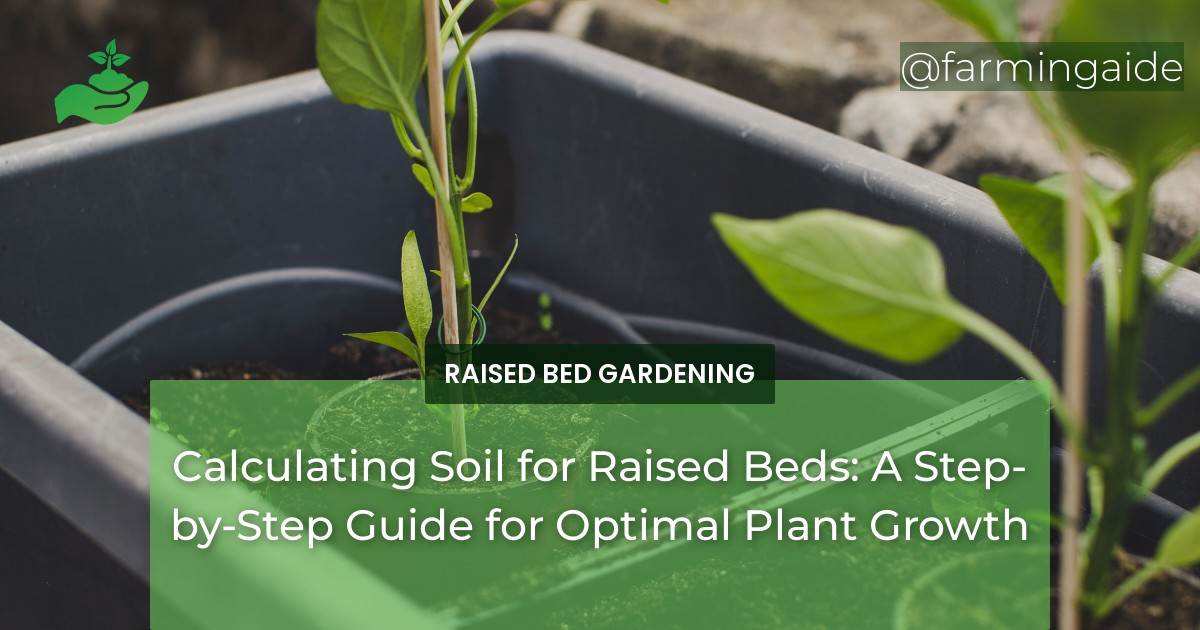Calculating soil for raised beds is a crucial step in ensuring optimal plant growth and health.
In this comprehensive guide, I will cover all the necessary information for calculating soil for raised beds, including factors to consider, measurement and calculation methods, and tips for maintaining healthy soil. By following these steps, you can save time and resources in the long run, prevent nutrient deficiencies and imbalances, and maintain the pH levels of your soil for successful crop rotation and planning.
Plastic Raised Flower Beds
Raised Bed Garden Fill
Gardening Liner
Raised Bed Planting Layout
Importance of Proper Soil CalculationFactors to Consider When CalculatingHow to Measure and CalculateTips for Maintaining Healthy SoilConclusion
Importance of Proper Soil Calculation
Proper soil calculation is essential for the success of any raised bed gardening project. Here are some reasons why:
Ensures optimal plant growth and health: By calculating the right amount of soil and amendments needed, you can provide your plants with the necessary nutrients and conditions for healthy growth.
Saves time and resources in the long run: By accurately calculating the amount of soil needed, you can avoid overbuying and wasting resources.
Prevents nutrient deficiencies and imbalances: Calculating the nutrient levels in your soil can help you determine the right amendments to add for balanced and healthy soil.
Helps maintain soil pH levels: Proper soil calculation can prevent pH imbalances, which can affect plant growth and health.
Allows for successful crop rotation and planning: By knowing the nutrient levels and composition of your soil, you can plan for crop rotation and choose plants that will thrive in your soil.
Factors to Consider When Calculating
When calculating soil for raised beds, there are several factors to consider:
Type of soil and its texture: Different types of soil have different compositions and textures, which can affect drainage, aeration, and nutrient levels.
Nutrient levels and composition: Conducting a soil test can help determine the nutrient levels and composition of your soil, which is crucial for plant growth.
pH levels: Soil pH levels can affect the availability of nutrients to plants, so it’s essential to consider this when calculating soil for raised beds.
Drainage and aeration: The type of soil and its texture can affect drainage and aeration, which are crucial for healthy plant growth.
Climate and weather conditions: The climate and weather in your area can also affect the type of soil and its composition, so it’s essential to consider this when calculating soil for raised beds.
Types of plants to be grown: Different plants have different nutrient needs, so it’s crucial to consider the types of plants you will be growing in your raised beds.
How to Measure and Calculate
Here are the steps to follow when measuring and calculating soil for raised beds:
Conduct a soil test: Use a soil testing kit or send a sample to a lab to determine the nutrient levels and composition of your soil.
Use the results to determine nutrient levels and soil type: Based on the results of your soil test, you can determine the type of soil you have and the nutrient levels present.
Calculate the amount of amendments needed: Use the desired pH levels and the nutrient needs of your plants to calculate the amount of amendments needed for your soil.
Measure the size and depth of the raised bed: Use a measuring tape to determine the size and depth of your raised bed to calculate the amount of soil needed.
Consider using a soil calculator or consulting with a local expert: For more accurate calculations, you can use a soil calculator or consult with a local expert who has experience with raised bed gardening.
ALSO READ
Tips for Maintaining Healthy Soil
To maintain healthy soil for your raised beds, here are some tips to follow:
Add organic matter regularly: Adding organic matter, such as compost, can improve soil structure and fertility.
Rotate crops: To prevent nutrient depletion and soil-borne diseases, rotate your crops every season.
Use cover crops: Cover crops can add nutrients and improve soil quality.
Mulch: Mulching can prevent erosion and conserve moisture in the soil.
Avoid over-tilling and compaction: Over-tilling and compaction can damage the soil structure and affect plant growth.
Monitor pH levels: Regularly check the pH levels of your soil and adjust as needed to maintain a balanced pH.
Conclusion
Properly calculating soil for raised beds is crucial for successful urban farming and horticulture practices. By considering factors such as soil type, nutrients, and pH levels, and using accurate measurement and calculation methods, gardeners can ensure optimal plant growth and maintain healthy soil for years to come. So, before starting your next raised bed gardening project, make sure to follow these steps to calculate the right amount of soil for your plants’ needs.
RELATED ARTICLES:


